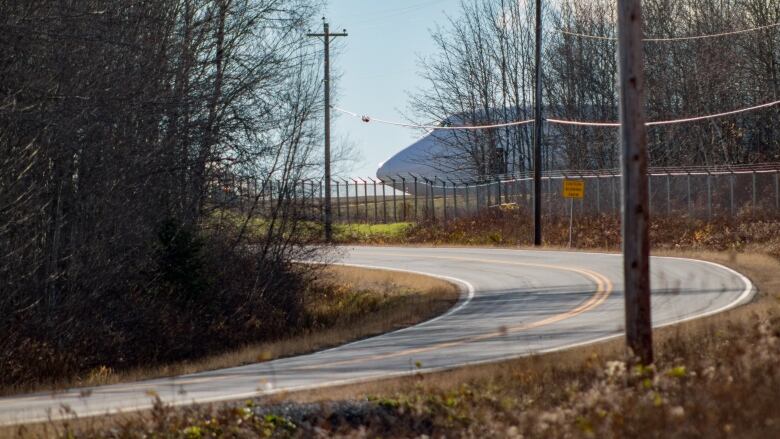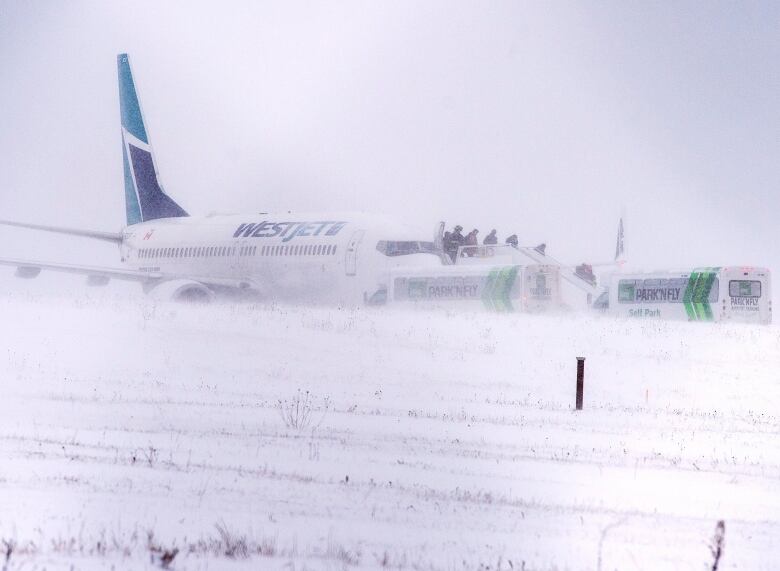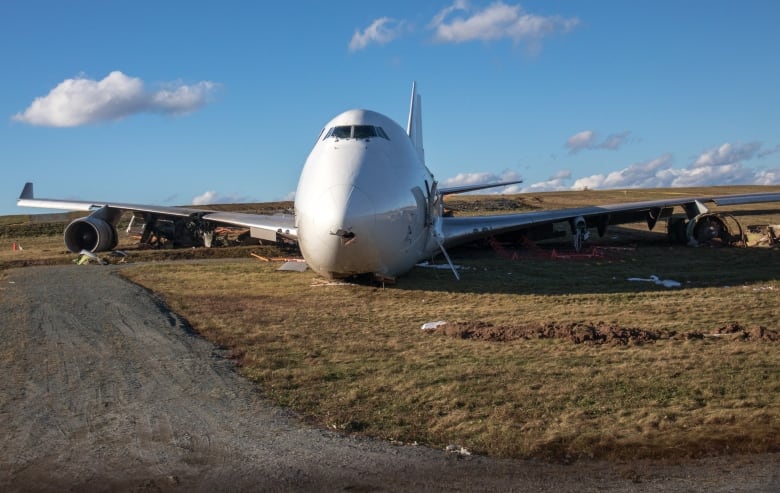As planes slide off runways, Transport Canada accused of dragging its heels
Transportation Safety Board says new regulations needed to 'reduce the risk of injury or death'

Planes skidding off the end of runways and barrelling toward roads or other public spaces is a frightening scenario that happens an average of nine times a year in Canada.
But the country is lagging behind other nations in adopting new regulations to help keep passengers safe when a plane rolls off a runway, according to the Transportation Safety Board.
For 12 years, the independent agency has urgedTransport Canada to introduce new rules to force airports to expand the flat, empty spaces at the end of runways that give pilots extra room to stop if a plane can't be haltedin time.
"It has a safe place to decelerate and that would reduce the risk of injury or death," Kathy Fox, chair of the Transportation Safety Board, said in an interview last year.
The risk of overruns has become clear in Nova Scotia, where inthe last 14 monthstwo planes have gone off the runway at the Halifax Stanfield International Airport.
A WestJet flight earlier this month slid 50 metres off the end of a runway.InNovember 2018, aBoeing 747 cargo jet went 210 metres and came to a stop dangerously close to a road.The cause of both incidents is still being investigated.

Fox notes the "very vivid image" of anAir France flight in 2005 that went off the end of a Toronto runway and crashed into aravine, injuring dozens ofpeople. It shows, she said, why it'simportant to expand what are known as "runway end safety areas."
Currently, the government requires airports to have a 60-metre strip at the end of runways for overruns and recommends an additional 90 metres, for a total of 150 metres. The same is expected at the start of runways in case planes undershoot landings.
The TSB wants a 300-metre space at the end of runways that are 1,200 metres or longer. Those runways are large enough to accept big cargo planes and passenger planes that can carry hundreds of people.
The Halifax airport said all of its runway end safety areas are 150 metres in length. If Transport Canada should require a larger area, the airport will make the changes to keep up with the regulations, an airport spokesperson said in an email.
Some airports have gone further and adopted the full recommendation from the TSB. The Ottawa International Airport, the Montral-Trudeau International Airportand the Vancouver International Airport all extended their runway end safety areas to 300 metres.

The300-metre area best reduces the hazards involved in runway overruns, according to the TSB.It's also the length recommended by the International Civil Aviation Organization, a United Nations agency that helps develop international rules for aviation.
Major airports in the United States have also adopted 300-metre runway end safety areas.
Runway overruns generally occur during landings or rejected takeoffs, according to the TSB. It also says the terrain beyond the end of many runways in Canada could contribute to aircraft damage and injuries to passengers and crew.
Transport Canada refused a CBC News request for an interview, but in an email said it is looking at changing its regulations.
"Transport Canada is developing a regulatory change proposal that will improve safety for Canadians and establish Runway End Safety Area regulations that are in line with international standards," said Frederica Dupuis, a spokesperson for Transport Canada.
Transport Canada would not say what size it will require runway end safety areas to be, but the TSBsays the government is expected to introduce rules for a150-metre area, not the recommended 300 metres.

Dupuis expects the proposed amendments to the Canadian Aviation Regulations will be published some time this year. But the federal institution has made promises like that before.
"If you look back at the history of this, Transport Canada has told us year over year that they were going to be enacting new regulations and every year it gets pushed to the right, so we'll have to see what actually happens," said Fox.
In 2018, Transport Canada told CBC News that amending the regulations takestime and is a complicated process.The regulator hasto consider associated costs, possible risks, other impacts and document all of those factors.
As the years of waiting for new rules tick by, planes continue to gooff runways an average of nine a year across Canada,according to the TSB's website.
"In the case of runway overruns, we believe there is systemic issue across the country," said Fox.

Fox said some airports may worry they don't have the room to expand. They could be in urban areas surrounded by buildings or near terrain like mountains that make it difficult to create large, flat spaces.
But she said there are ways around that problem.
An engineered arresting system can be installed to slow an aircraft down in a shorter distance, she said. A series of blocks made with crushable concrete, or a mixture of concrete and foam, areplaced at the end of a runway andbreak apart as a plane rolls over them. Thefriction on the wheels brings it gradually to a stop.
The system has been used in a number of airports in the United States and is credited with helping save several aircraft, according to Fox.

Fox said air transportation in Canada is, overall, very safe, but there's still room for improvement.
"The area of runway overruns is certainly one where we think more can be done by the regulator and by the airport authorities to make sure that if somebody runs off the end that there's no significant damage and certainly no injuries or worse."












_(720p).jpg)


 OFFICIAL HD MUSIC VIDEO.jpg)
.jpg)



























































































